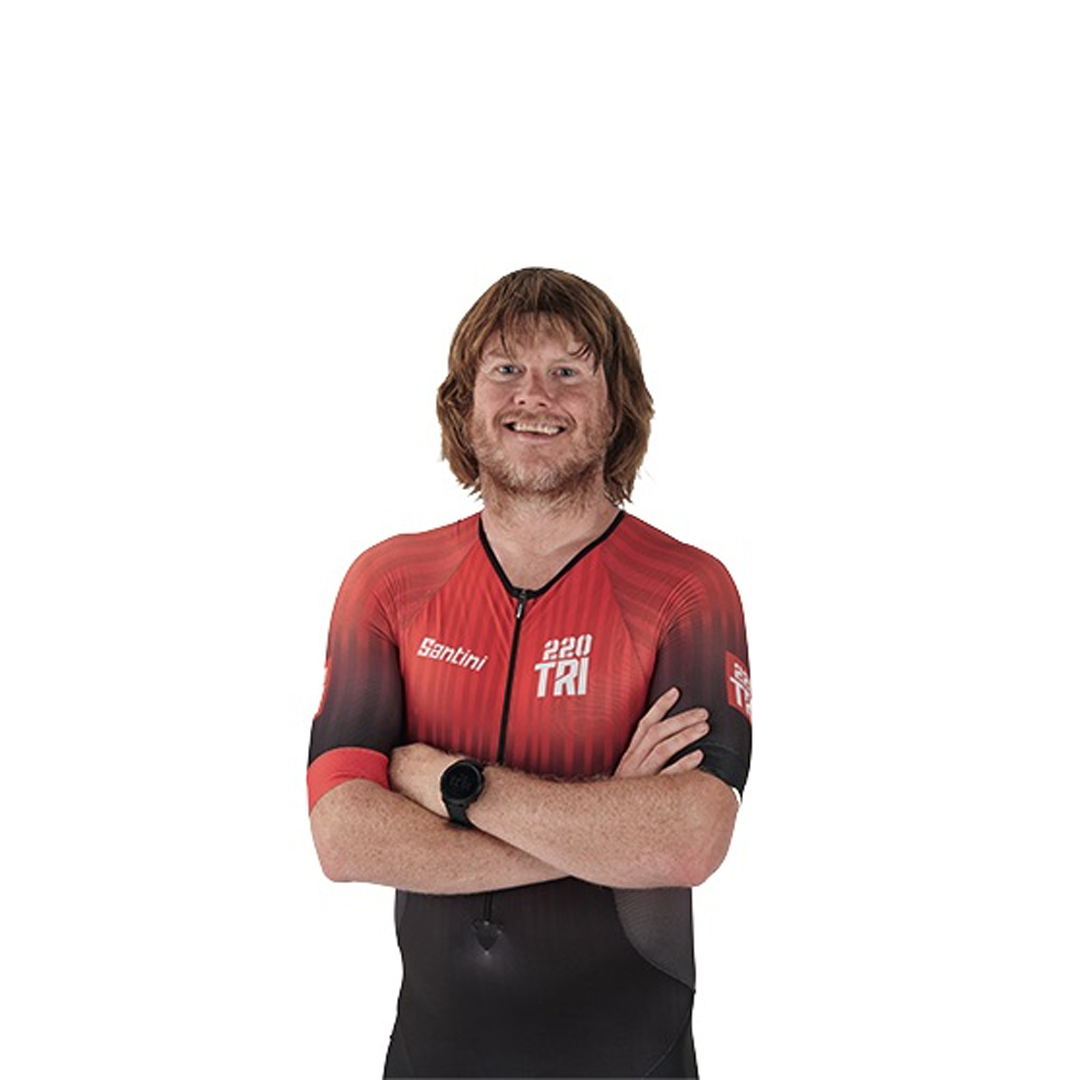Rapha was founded in London in 2004, launching its debut range with a month-long exhibition in East London’s Truman Brewery. Entitled ‘Kings of Pain’, it showcased six heroes from cycling’s golden era and beyond: Fausto Coppi, Jacques Anquetil, Raymond Poulidor, Tom Simpson, Eddy Merckx and Bernard Hinault. As well as representing the suffering (and joy) of cycling, they dressed in a style that provided the inspiration for Rapha’s breakthrough into the cycling apparel market.
Core to Rapha’s huge growth around the world, in both city and road markets, has been a glorious aesthetic, premium price and its inspirational founder Simon Mottram. And it’s Mottram who Urban Cyclist magazine secured an exclusive interview with to talk fashion, superhighways and Brexit…
Urban Cyclist: Tell us where the idea for Rapha clothing came from.
Simon Mottram: I’d been riding my bike since I was young and fell in love with cycling when watching the Tour de France on Channel 4. I was also one of those guys in the early 90s who rode to work when no one else did. Condor Pista was my fixed-wheel of choice. The only others doing that were messengers and a few weirdos – like me.
I reached my mid-20s and cycling grew increasingly important to me as a leisure pursuit. And it was around then – we’re talking the mid-90s – that the idea of a clothing brand began to percolate. Why? Because I was frustrated with the cyclist’s clothing lot. For many people cycling’s the most important thing outside their friends and family. Why would you want to wear something so ugly? You must have performance and style because the sport is so important – so beautiful and tough.
Can you remember your entry into the bike clothing market?
Our first product, which is still one of our best-sellers, was our black Classic jersey featuring a white stripe; in fact, it was a top-seller for 10 years – a jersey to wear all day in all conditions up and down mountains. It wasn’t a racing aesthetic; it was something more elegant and wearable.
As an aside, we redesigned the Classic top last year for the first time in 12 years and made 12 changes to it. That was tied in with fit, zippers, bonding, construction details… very subtle changes. It was a bit like a BMW 5 Series that’s evolved over 20 years but in tiny increments.

As for our urban range, the first batch was a buttoned, collared polo constructed from Merino wool. It had pockets on the front and echoed of days gone by. Then in 2005 we launched a range called ‘Fixed’. The fixie thing was just starting and urban gear was taking off. So we’ve been heavily into the city sector for around 12 years now. I think the only brand around at the time that touched upon the urban sector was Swobo [which continues to this day].
Where does Rapha take its design cues?
We’ve always delved into a few places. From day one, we looked back at the sport when things were more stylish. We were often labelled as a retro or vintage brand, which wasn’t the point because we weren’t trying to recreate the past or anything. But there was a style in the late 60s/early 70s that was so much nicer than the mid-90s. Again, those references could be rather subtle, whether it was the cut of a collar, the way a button fastens a jersey or the way pockets are designed.
That went hand in hand with a strong appreciation for what is out there in the world of fashion, whether that’s men’s or women’s style. We were the first to do that. For many manufacturers, cycling is defined by cycling; for us it’s a much bigger thing. Why shouldn’t you have a jacket that looks as good as an amazing coat from Acne Studios? Cyclists are human beings, too, and we’re part of a world where style is pervasive, so you can’t ignore it.
We also take cues from our own past whether it’s a bright pink cuff on a city Merino top or O-ring pulls. We made those because they’re easy to grab in bike gloves. We now use them in many of our city products because it’s very Rapha.

Where do you source your materials?
Traditionally we would travel the world visiting fabric fairs and sports shows beyond cycling in search of the right fabric. When you start out that’s what you have to do. Basically, you find a few mills you trust and work with them repeatedly.
You don’t have to race to love cycling. You can get as much joy from simply riding around town
Over the last five years or so, we’ve developed an increasing number of proprietary fabrics. So the Classic jersey that we talked about, that used to be woven from SportWool and we were the first people to use it and then others followed. Then over the past five years we’ve developed a proprietary version of that called RPM – Rapha Performance Merino – which is our blend of Merino and polyester.
We continue to use that in many of our jerseys. You enjoy the performance benefits of Merino, like high wicking, odour resistance and comfort, plus the structure and strength of synthetic woven into it. That means you can weave in pockets and throw them in the wash without shrinking.
When it comes to outerwear, we’ve worked with a number of membrane technologies. In fact, we ran a study a few years ago where we looked at 12 leading waterproof fabrics, each of which we tried in the same garment so we could make a fully informed final choice.
Your love for cycling is clear but does that love stretch to the race circuit?
In my teens I didn’t join a club and start racing, and by the time I’d really fallen in love with cycling in my mid-20s I was married and began to have children. I made the big mistake of not establishing a routine of training and racing before I had a family!
But I’m an enthusiast and that’s fine because you don’t have to race to love cycling. It’s not the natural end point. It is for many and that’s brilliant but it doesn’t have to be because you can get as much joy from simply riding around town. Mind you, I’ve completed a few sportives including L’Etape du Tour [where recreational riders complete a stage of the Tour de France].
I first did it back in 2000 where it covered the Alps and was very tough. There were only about 50 of us from outside France because there wasn’t the culture that’s permeated the UK of going for really long rides. Now GranFondos and the like are part-and-parcel of what people do. My regular training route for that event involved cycling to Regent’s Park, Richmond Park and up into North London to Hertfordshire and Buckinghamshire, and I’m still doing that at least once a week with Rapha.
Are work rides part of the Rapha DNA?
We have a Rapha ride every Wednesday, which I do religiously. It’s my only moment of the week to tick off a long ride. But with 180 people in our London office, we don’t all ride together. Instead, there are rides that go out to the four corners of London. I’ve ridden with a group of mates and extended mates for 20 years. I rode with eight of them yesterday, in fact, but cyclocross rather than road. In the winter and into spring we often do a cross ride of 3-4hrs.
The usual routine for a cyclist is a long ride at the weekend and a few smaller spins in the week, but I had to reverse that because I have a disabled child so rarely have time at the weekend.
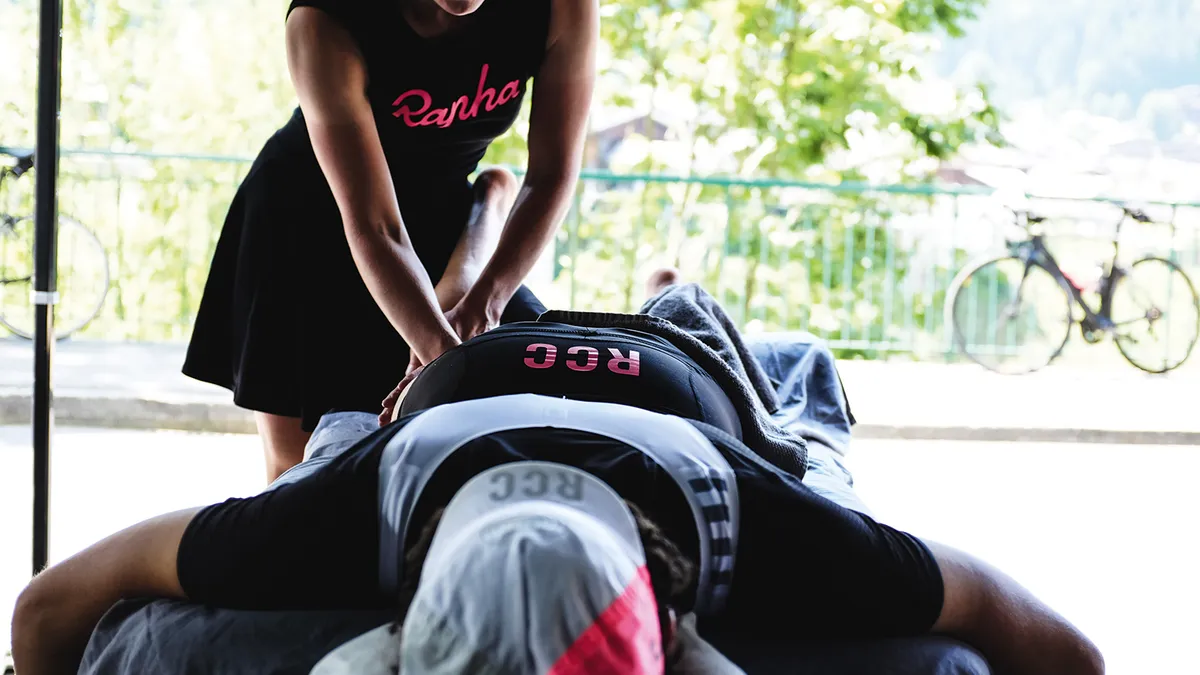
Tell us about balancing work with raising your disabled son?
Oscar is 22. You’ve probably heard of the autistic spectrum of disorders. He’s at the extreme end, which means he’s non-verbal and not toilet trained, so he requires an incredible amount of support every day.
I’m married with two other wonderful children, but two defining features of my adult life have been the pursuit and building of Rapha, and looking after Oscar and trying to find the best path for him.
In some ways, though, Oscar’s situation gives me greater focus. If I’m going to spend time away from Oscar, then I need to make it count. This isn’t some kind of game to create pretty pictures. The other thing is Rapha needs to work because I need to bring in the money; my wife gave up work when Oscar was diagnosed 20 years ago to look after him full-time.
There’s a horrible risk when you have a severely disabled child that it totally defines your life, but it’s important that you don’t become a ‘disabled family’.
How has the cycling landscape changed since your formation in 2004?
When we launched, there were no signs that the UK was going to be the most vibrant and lively cycling market, which I think it is now. It was before Beijing, the London bombings and the fixie boom, and since then the boom has been phenomenal.
We’ve been lifted up by that wave and cycling is now much more of the cultural conversation than it used to be. In many ways, it’s more legitimate, even though it’s still a bit of a niche sport packed with challenges to making it more popular, whether that’s safety concerns for commuters or doping.
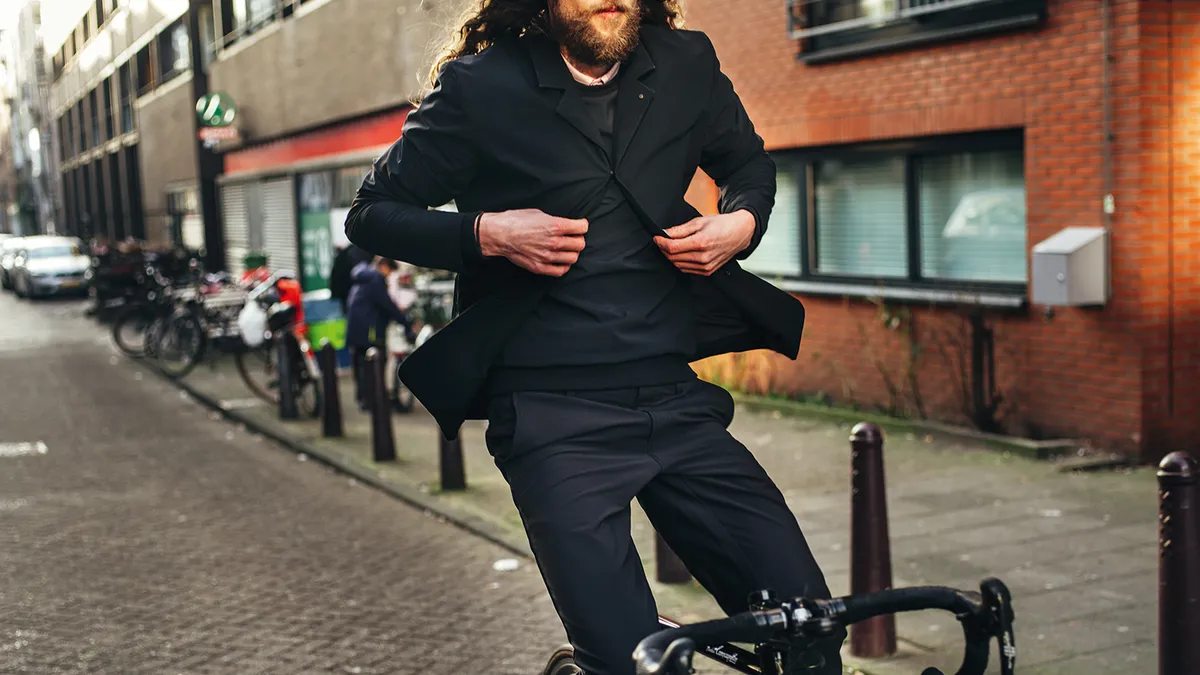
How safe do you perceive cycling in this country to be?
I actually think it’s far safer riding in the city than out in the countryside. People in cities now – certainly in London – you’re more used to seeing riders. But out on country roads, where you have high hedges and sunken lanes, and cars drive much faster than in the city, it can be more dangerous.
The rise of commuting in key cities is phenomenal – it’s a revolution. Products have been developed to support that revolution, whether it’s clothing or helmets, lighting or security.
What are your thoughts on London’s Superhighways?
I have to say that when the Superhighways were first mooted, I was sceptical because fundamentally I feel that roads should be shared between all forms of transport and cars should bloody well slow down.
It sounds romantic but in other parts of the world it is the case. In Germany and Holland, for instance, there’s a presumption of guilt on the part of the motorist if there’s an accident. In the UK that law doesn’t exist. But things can change. Which would be wonderful because it’s better for everybody if the streets are covered with pedestrians and cyclists rather than large lumps of metal with one person in.
So I still think that’s where it needs to end up but I’ve come around to the Superhighways; in fact, there’s now one planned to come down from where I live in North London to Regent’s Park and connect with the others.
We’re hopefully heading to a better future where we have fewer cars in town and, more importantly, fewer trucks. But ultimately we’re a small, congested island. When you look at Germany and France, they also have this amazing network of parallel cycle paths. And not like the cycle paths we have but like roads alongside roads, but they have more space to do that.
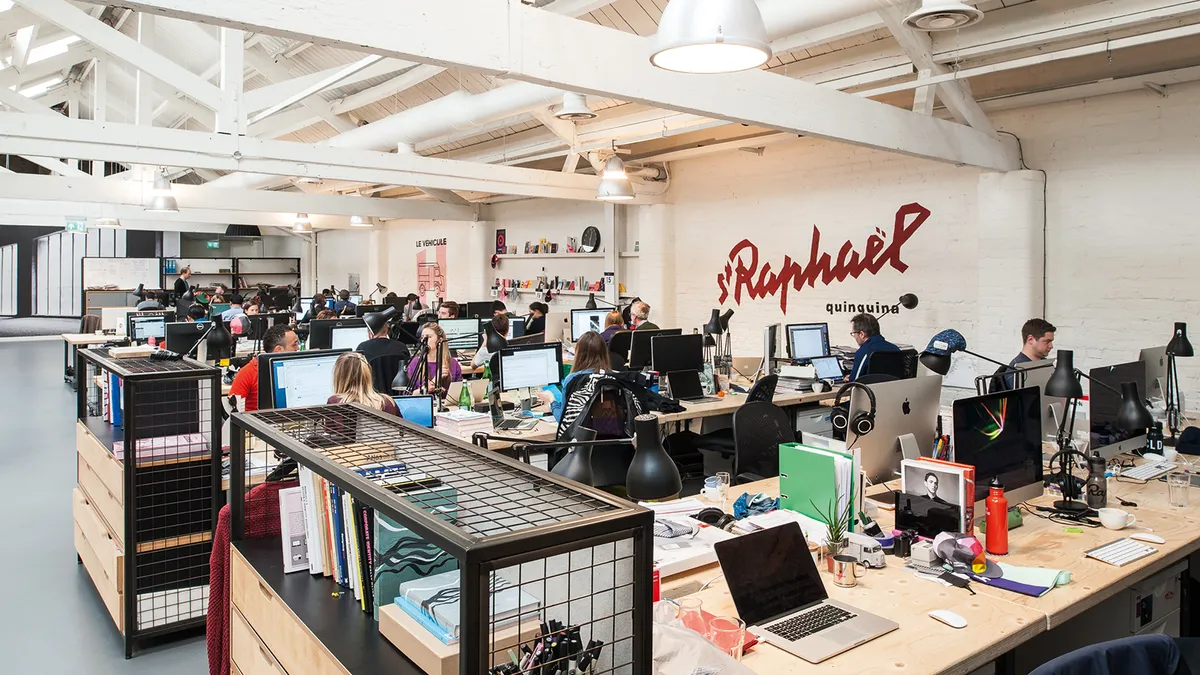
And are many of those mainland European riders dressed in Rapha?
Around 75% of our business is exported, and we talk about four regions that are roughly the same size. So the UK is one region. The rest of Europe, which I like to think we’re still part of, is a little larger. Then the US, which is a little larger again. And then there’s Asia Pacific. That Asian market is our biggest customer base and influences the way we design some ranges. For a long time we designed solely for the UK but if you’re in Singapore, with high humidity and nearly 30°C every day, you need lightness and breathability.
How will leaving the EU affect Rapha?
Well, personally I think leaving the European Union is a tragedy and disaster, and I pull my hair out. Professionally it’s interesting. Because we’re international and a global brand, we deal in dollars and Euros. We also sell in Yen and other currencies. So we’re dealing with lots of currencies all the time, so not beholden to the UK market. So we’re kind of insured.
But anything that creates friction and adds uncertainty and concern is a dangerous thing for any business. We don’t want it to be any harder than it already is, but I don’t think we’ve seen the effects of Brexit yet. It’ll start to be a concern if there’s a rise in inflation and a downturn. But overall as a business we’re in a fortunate position.
Finally, what does the future hold for Rapha?
The thing that I always point to is building the community. We have 185,000 customers around the world and 10,000 of those are members of the Rapha Cycling Club. Tied in with that, we’re looking to open more clubhouses; in fact, we recently opened two more in the United States – one in Seattle and the other in Boulder. So we’re now up to 15 globally.
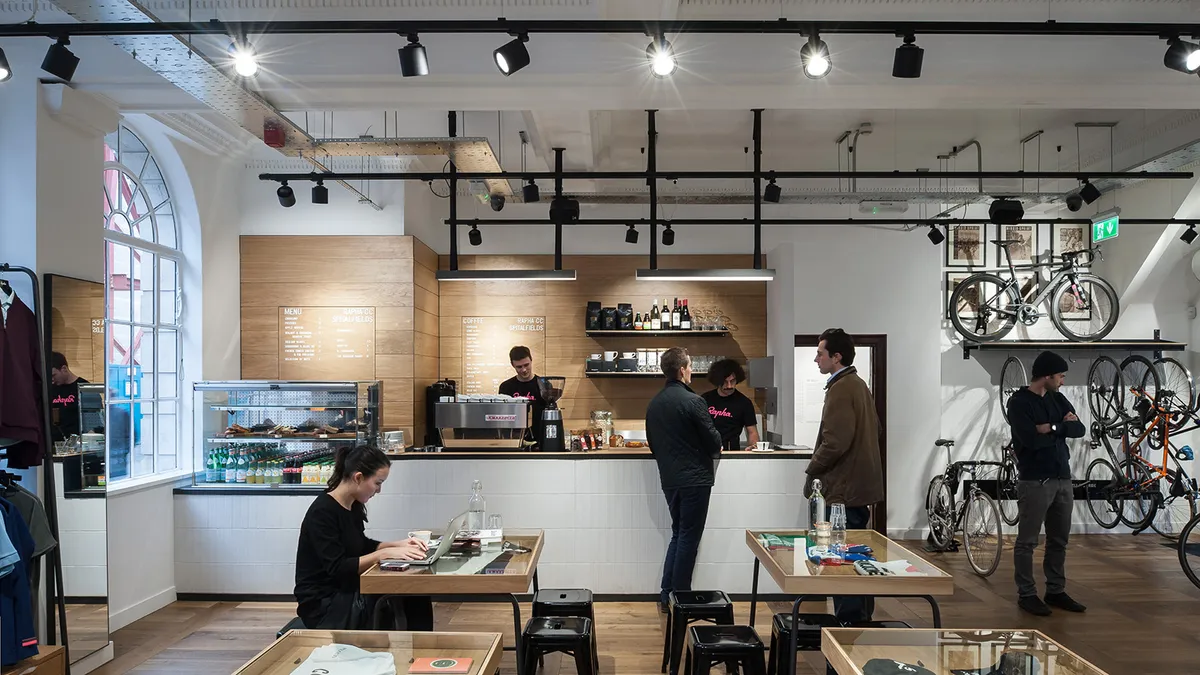
Urban, lifestyle, casual… that’s a huge focus for us as well. There are only so many hours a day I can wear Lycra. But I’m a cyclist all day, every day, even when not riding. So we see those products as being ever-more important.
Despite no longer partnering with Sky, we’ll also continue to be active in the race scene because it’s fundamentally the heart and lifeblood of the business. Yes, we might spend a little less time in wind tunnels but I’ll tell you something – skinsuits are nothing compared to creating trousers that really work on the bike – and off it – in the rain!

